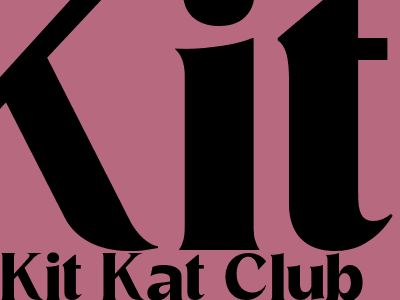Kit Kat Klub: A Cabaret of Weimar Republic Berlin
Introduction
The Kit Kat Klub, an iconic cabaret club located in Weimar Republic Berlin, symbolized the cultural and social upheaval of the era. It epitomized the hedonism, decadence, and artistic experimentation that flourished in Berlin during the 1920s and early 1930s.
This blog post explores the history, significance, and enduring legacy of the Kit Kat Klub, a legendary venue that left an indelible mark on German culture and the world of cabaret.
The Birth of the Kit Kat Klub
The Weimar Republic Era
The Weimar Republic, established after the defeat of Germany in World War I, was a period of significant social and political change. Berlin, its capital, became a vibrant hub for artistic and cultural experimentation.
In this climate, the Kit Kat Klub emerged as a symbol of the era's cultural liberation. It opened its doors in 1929, showcasing risqué performances that challenged traditional norms and celebrated the avant-garde.
The Club's Atmosphere
The Kit Kat Klub was renowned for its decadent atmosphere. It featured a dimly lit interior, provocative décor, and an eclectic mix of patrons from all walks of life. The club's performances were known for their sensual and provocative nature, often featuring nudity, cross-dressing, and other transgressive acts.
The Kit Kat Klub's Significance
A Breeding Ground for Artistic Innovation
The Kit Kat Klub became a breeding ground for some of the most influential artists of the Weimar Republic era. Performers like Marlene Dietrich, Bertolt Brecht, and Anita Berber graced its stage, pushing the boundaries of artistic expression.
The cabaret's emphasis on experimentation and provocation influenced the development of various artistic movements, including the Dada and Surrealist movements, which sought to challenge established norms and explore the subconscious mind.
A Reflection of Social and Political Change
The Kit Kat Klub's performances reflected the complex social and political changes occurring in Weimar Germany. The club's open embrace of marginalized groups, including LGBTQ+ individuals, challenged traditional societal norms and conservative values.
The club's performances often satirized the political turmoil and economic instability of the era, offering a platform for social critique and commentary on the changing world.
The Legacy of the Kit Kat Klub
A Lasting Symbol of the Weimar Republic
Despite its closure in 1933 with the rise of the Nazi regime, the Kit Kat Klub remains an iconic symbol of the Weimar Republic era. Its legacy continues to inspire artists and cabaret performers to this day.
The club's unique blend of artistic experimentation, social commentary, and hedonism has left an indelible mark on the history of cabaret and continues to resonate with audiences worldwide.
Contemporary Revivals
The Kit Kat Klub's influence can be seen in contemporary cabaret and performance art. Revivals of the club's performances, such as the musical "Cabaret," have brought its legacy to new generations of audiences.
These revivals pay homage to the club's original spirit of experimentation and the enduring power of artistic expression in times of social change and cultural upheaval.
Conclusion
The Kit Kat Klub was a transformative force in the Weimar Republic, a symbol of cultural liberation, artistic experimentation, and social commentary. Its legacy continues to inspire and influence performers and artists today, reminding us of the transformative power of artistic expression in times of social and political change.

Komentar